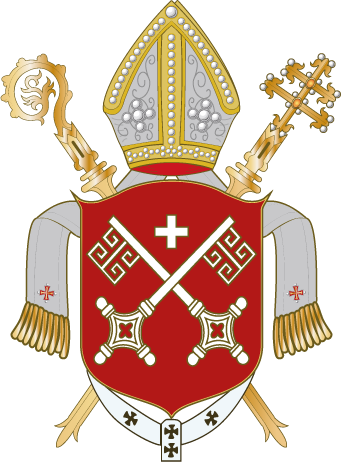|
Jesteburg
Jesteburg is a municipality in the district of Harburg, in Lower Saxony, Germany. It is situated approximately 25 km south of Hamburg, and 6 km east of Buchholz in der Nordheide. Jesteburg is also the seat of the ''Samtgemeinde'' ("collective municipality") Jesteburg. In Jesteburg lies the confluence of two small rivers, the Schmale Aue and the Seeve. History The first official mentioning of Jesteburg dates back to the year 1202, in a document signed by the Hartwig II, Archbishop of Bremen. The castle which gave the town its name is supposed to have guarded the Seeve passage until the 13th century. Remains of this ''Burg'' have not yet been found. In 1872/73, the railroad between Buchholz in der Nordheide and Lüneburg which still runs through Jesteburg was built. During an Allied air raid on nearby Hamburg in January 1943 incendiary bombs where dropped on Jesteburg, several buildings where destroyed. On 19 April 1945, the railroad bridge was blown up by the Wehrm ... [...More Info...] [...Related Items...] OR: [Wikipedia] [Google] [Baidu] |
Jesteburg (Samtgemeinde)
Jesteburg is a ''Samtgemeinde'' ("collective municipality") in the district of Harburg, in Lower Saxony, Germany. Its seat is in the village Jesteburg. The ''Samtgemeinde'' Jesteburg consists of the following municipalities: # Bendestorf # Harmstorf # Jesteburg Jesteburg is a municipality in the district of Harburg, in Lower Saxony, Germany. It is situated approximately 25 km south of Hamburg, and 6 km east of Buchholz in der Nordheide. Jesteburg is also the seat of the ''Samtgemeinde'' ("co ... Samtgemeinden in Lower Saxony {{Harburg-geo-stub ... [...More Info...] [...Related Items...] OR: [Wikipedia] [Google] [Baidu] |
Kunststätte Bossard
Kunststätte Bossard is an expressionist ''Gesamtkunstwerk'', sometimes also referred to as a visionary environment, located in the town of Jesteburg in Lower Saxony, Germany. It was created by Swiss artist (1874–1950) and his wife, Jutta Kroll-Bossard (1903–1996). It combines architecture, sculpture, painting and garden design. History Johann Michael Bossard was born in Zug, Switzerland in 1874. He was apprenticed as a builder of tiled stoves before studying art at Munich and Berlin. In 1907, he became professor for sculpture at the ''Kunstgewerbeschule'' in Hamburg (today the ''Hochschule für bildende Künste Hamburg''), a position he held until his retirement in 1944. Jutta Krull, 29 years his junior, was his student before they married in 1926. Before 1912, Bossard worked on various pieces of public art, e.g. the façade ornaments of the townhall of Berlin-Treptow (see ), the clock face on the Hamburg Stock Exchange or the sculptures on the '' Völkerkundemuseum'' of H ... [...More Info...] [...Related Items...] OR: [Wikipedia] [Google] [Baidu] |
Harburg (district)
District Harburg is a districts of Germany, district (''Landkreis'') in Hamburg and Lower Saxony, Germany. It takes its name from the town of Harburg (quarter), Harburg upon Elbe, which used to be the capital of the district but is now part of Hamburg. It is bounded by (from the east and clockwise) the districts of Lüneburg (district), Lüneburg, Heidekreis, Rotenburg (district), Rotenburg (Wümme) and Stade (district), Stade, by the City of Hamburg and the State of Schleswig-Holstein (District of Lauenburg (district), Lauenburg). History In 1885 the Prussian government established three districts in this region: the District of Harburg, the District of Winsen and the Urban districts of Germany#Germany, district-free City of Harburg (quarter), Harburg upon Elbe. In 1932 the districts of Winsen and Harburg were merged; the City of Harburg-Wilhelmsburg (which had been merged in 1927) became the capital of the district, although it remained district-free and hence was not a part of ... [...More Info...] [...Related Items...] OR: [Wikipedia] [Google] [Baidu] |
Seeve
Seeve is a river of Lower Saxony, Germany, a tributary of the Elbe. It is approximately long. The municipality of Seevetal is named after this river. Course The Seeve source located is near Wehlen, south-east of Undeloh in the northern part of the Lüneburg Heath at an elevation of about 67 metres. It passes Holm, Lüllau, Jesteburg, Bendestorf, Ramelsloh, Horst, Lindhorst, Hittfeld, Karoxbostel, Glüsingen, Maschen Maschen is a village in the municipality of Seevetal in Harburg district in the German state of Lower Saxony. It lies south of Hamburg on the northern edge of the Lüneburg Heath and within the commuter zone of the city of Hamburg. Maschen Mar ... and Hörsten. It then flows into the Elbe between Over and Wuhlenburg. In Holm and Horst there are barrages to drive watermills. Just before joining the Elbe, the Seeve passes the natural reserve . Water The Seeve has a relatively steady, low water temperature throughout the year of and is known as c ... [...More Info...] [...Related Items...] OR: [Wikipedia] [Google] [Baidu] |
Lüneburg
Lüneburg (officially the ''Hanseatic City of Lüneburg'', German: ''Hansestadt Lüneburg'', , Low German ''Lümborg'', Latin ''Luneburgum'' or ''Lunaburgum'', Old High German ''Luneburc'', Old Saxon ''Hliuni'', Polabian ''Glain''), also called Lunenburg ( ) in English, is a town in the German state of Lower Saxony. It is located about southeast of another Hanseatic city, Hamburg, and belongs to that city's wider metropolitan region. The capital of the district which bears its name, it is home to roughly 77,000 people. Lüneburg's urban area, which includes the surrounding communities of Adendorf, Bardowick, Barendorf and Reppenstedt, has a population of around 103,000. Lüneburg has been allowed to use the title "Hansestadt" (''Hanseatic Town'') in its name since 2007, in recognition of its membership in the former Hanseatic League. Lüneburg is also home to Leuphana University. History ImageSize = width:1050 height:100 PlotArea = width:1000 height:50 left:50 bottom: ... [...More Info...] [...Related Items...] OR: [Wikipedia] [Google] [Baidu] |
Expressionist
Expressionism is a modernist movement, initially in poetry and painting, originating in Northern Europe around the beginning of the 20th century. Its typical trait is to present the world solely from a subjective perspective, distorting it radically for emotional effect in order to evoke moods or ideas. Expressionist artists have sought to express the meaningVictorino Tejera, 1966, pages 85,140, Art and Human Intelligence, Vision Press Limited, London of emotional experience rather than physical reality. Expressionism developed as an avant-garde style before the First World War. It remained popular during the Weimar Republic,Bruce Thompson, University of California, Santa Cruzlecture on Weimar culture/Kafka'a Prague particularly in Berlin. The style extended to a wide range of the arts, including expressionist architecture, painting, literature, theatre, dance, film and music. The term is sometimes suggestive of angst. In a historical sense, much older painters such as Matthi ... [...More Info...] [...Related Items...] OR: [Wikipedia] [Google] [Baidu] |
Eyendorf
Eyendorf is a municipality in the district of Harburg, in Lower Saxony, Germany Germany,, officially the Federal Republic of Germany, is a country in Central Europe. It is the second most populous country in Europe after Russia, and the most populous member state of the European Union. Germany is situated betwe .... References External links Official website Harburg (district) {{Harburg-geo-stub ... [...More Info...] [...Related Items...] OR: [Wikipedia] [Google] [Baidu] |
Wehrmacht
The ''Wehrmacht'' (, ) were the unified armed forces of Nazi Germany from 1935 to 1945. It consisted of the ''Heer'' (army), the ''Kriegsmarine'' (navy) and the ''Luftwaffe'' (air force). The designation "''Wehrmacht''" replaced the previously used term and was the manifestation of the Nazi regime's efforts to rearm Germany to a greater extent than the Treaty of Versailles permitted. After the Nazi rise to power in 1933, one of Adolf Hitler's most overt and audacious moves was to establish the ''Wehrmacht'', a modern offensively-capable armed force, fulfilling the Nazi régime's long-term goals of regaining lost territory as well as gaining new territory and dominating its neighbours. This required the reinstatement of conscription and massive investment and defense spending on the arms industry. The ''Wehrmacht'' formed the heart of Germany's politico-military power. In the early part of the Second World War, the ''Wehrmacht'' employed combined arms tactics (close- ... [...More Info...] [...Related Items...] OR: [Wikipedia] [Google] [Baidu] |
Incendiary Bombs
Incendiary weapons, incendiary devices, incendiary munitions, or incendiary bombs are weapons designed to start fires or destroy sensitive equipment using fire (and sometimes used as anti-personnel weaponry), that use materials such as napalm, thermite, magnesium powder, chlorine trifluoride, or white phosphorus. Though colloquially often known as bombs, they are not explosives but in fact are designed to slow the process of chemical reactions and use ignition rather than detonation to start or maintain the reaction. Napalm for example, is petroleum especially thickened with certain chemicals into a 'gel' to slow, but not stop, combustion, releasing energy over a longer time than an explosive device. In the case of napalm, the gel adheres to surfaces and resists suppression. Pre-modern history A range of early thermal weapons were utilized by ancient, medieval/post-classical and early modern armies, including hot pitch, oil, resin, animal fat and other similar compounds. Sub ... [...More Info...] [...Related Items...] OR: [Wikipedia] [Google] [Baidu] |
Hartwig Of Uthlede
Hartwig of Uthlede (died 3 November 1207) was a German nobleman who – as Hartwig II – Prince-Archbishop of Bremen (1185–1190 and de facto again 1192–1207) and one of the originators of the Livonian Crusade. Biography Coming from a family of the Bremian Ministerialis at Uthlede, he was a canon of Bremen Cathedral and a clerk of Duke Henry the Lion of Saxony, House of Guelph, before becoming prince-archbishop in 1185. When the Bremian cathedral chapter elected him for prince-archbishop, due to the competitive politics within Kingdom of Germany at the time, this was regarded a Guelphic triumph.Glaeske, "Hartwig II.". A canon named Meinhard, originally from the Augustinian monastery at Segeberg (in Hartwig's diocese), was active at Üxküll among the pagan Livonians, apparently attempting to gain converts through preaching. In 1186, one year into Hartwig's episcopate, the prince-archbishop intervened and gave him the status of a bishop, in effect seizing control ... [...More Info...] [...Related Items...] OR: [Wikipedia] [Google] [Baidu] |
Archbishop Of Bremen
This list records the bishops of the Roman Catholic diocese of Bremen (german: link=no, Bistum Bremen), supposedly a suffragan of the Archbishopric of Cologne, then of the bishops of Bremen, who were in personal union archbishops of Hamburg (simply titled Archbishops of Hamburg-Bremen), later simply titled archbishops of Bremen, since 1180 simultaneously officiating as rulers of princely rank (prince-archbishop) in the Prince-Archbishopric of Bremen (german: link=no, Erzstift Bremen; est. 1180 and secularised in 1648), a state of imperial immediacy within the Holy Roman Empire. Bremen and Hamburg were the seats of the chapters at Bremen Cathedral and Hamburg Concathedral, while the incumbents used to reside in their castle in Vörde since 1219. Titles of the incumbents of the Bremian See Not all incumbents of the Bremian See were imperially invested princely power as Prince-Archbishops and not all were papally confirmed as bishops. In 1180 part of the Bremian diocesa ... [...More Info...] [...Related Items...] OR: [Wikipedia] [Google] [Baidu] |
Lower Saxony
Lower Saxony (german: Niedersachsen ; nds, Neddersassen; stq, Läichsaksen) is a German state (') in northwestern Germany. It is the second-largest state by land area, with , and fourth-largest in population (8 million in 2021) among the 16 ' federated as the Federal Republic of Germany. In rural areas, Northern Low Saxon and Saterland Frisian language, Saterland Frisian are still spoken, albeit in declining numbers. Lower Saxony borders on (from north and clockwise) the North Sea, the states of Schleswig-Holstein, Hamburg, , Brandenburg, Saxony-Anhalt, Thuringia, Hesse and North Rhine-Westphalia, and the Netherlands. Furthermore, the Bremen (state), state of Bremen forms two enclaves within Lower Saxony, one being the city of Bremen, the other its seaport, Bremerhaven (which is a semi-enclave, as it has a coastline). Lower Saxony thus borders more neighbours than any other single '. The state's largest cities are state capital Hanover, Braunschweig (Brunswick), Lüneburg, ... [...More Info...] [...Related Items...] OR: [Wikipedia] [Google] [Baidu] |




